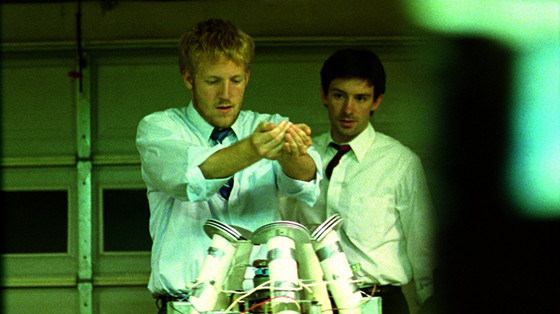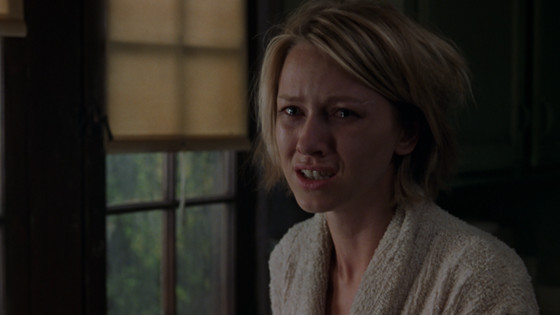
These days, discussions around complex movies always tend to circle back to the same-old puzzle-box mysteries — films with labyrinthine plotting, intricate rules, or shocking twists that will catch even the most eagle-eyed of viewers off-guard. And honestly, there’s nothing wrong with a solid brainteaser that demands your undivided attention and calls for a second look — think of “Donnie Darko”, “The Prestige”, “Pi”, or “Perfect Blue”, just to name a few. As a matter of fact, they are well-represented in our round-up list of most complex movies of all time.
But we also wanted to cast a wider net and dive a little deeper to highlight not just complex movies in a purely narrative sense, but also those that leaves the viewer to their own devices to figure things out and have sparked heated debates over their meanings and themes. Narrowing down the likely contenders for this list, we sought out films that provoke wildly different interpretations, live rent-free in our heads, and practically beg for multiple rewatches in order to be fully unpacked. One’s mileage is likely to vary, and some of these might not be everyone’s cup of tea, but there’s a reason why the following ten movies have befuddled audiences and pundits alike for years. Without further ado, let’s dive in.
1. Last Year at Marienbad (1961)

I guess we can start by explaining to the uninitiated that this experimental French movie takes place at a luxury country hotel, and that a man simply known as X (Giorgio Albertazzi) approaches a woman, A (Delphine Seyrig) and insists they have already met. In fact, he claims that they had a brief encounter that led to a passionate romantic affair a year ago in the very same resort château they’ve bumped into each other. To further muddy the waters, after seeming to have no recollection of the man at first, A inexplicably starts to accept his words as potentially true as the story progresses. By the way, have we mentioned Alfred Hitchcock makes a blink-it-and-you-missed-it cameo via a full-size cardboard cut-out?
A ghost story that ebbs and flows like a hazy dream, layered with timelines stacked one on top of another like Russian nesting dolls, Alan Resnais’ intentionally opaque, knotty hall-of-mirrors pokes at the viewer with open-ended questions: Is X gaslighting A? Or is A unconsciously attempting to compartmentalize a painful — and perhaps traumatic — memory? Are they both dead? Did X’s husband kill her in a fit of jealousy? It’s up to each viewer to ponder and draw their own conclusions, though the absence of ‘right’ or ‘wrong’ answers is exactly what keeps us coming back for more.
2. Primer (2004)

One of the chief pleasures of time-travel movies lies in their ability to put your brain through the wringer with a hard sci-fi framework in which elliptical timelines converge in delightfully unpredictable ways. Unfortunately, most well-known entries purposefully dumb-down their premises or spoon-feed the audience to ensure that no one gets lost in the shuffle (think “Back to the Future” or “Edge of Tomorrow”).
Save for the first two Terminators, there’s a solid argument that Shane Carruth’s lo-fi cult item deserves to be seen as the apex of the entire sub-genre. The $7,000 indie sensation certainly earns a lot of points for taking a more grounded and cerebral approach that forces you to think hard about the metaphysical rules of its premise and purvey all the moral pickles and existential implications about bouncing backwards and forwards through time.
Prepare to find your resolve and scientific jargon thoroughly tested while trying to keep up with the central framework as a pair of bootstrapping software engineers explore the lucrative possibilities of the cutting-edge tech device they put together in their basement, which includes slyly manipulating the stock market to earn a quick buck (And for another doozy, try Carruth’s 2013s “Upstream Color” next).
3. Persona (1966)

The rare Ingmar Bergman movie that isn’t predominantly concerned about God’s deafening silence (though frankly even that much is up to debate), this multilayered, psychosexual two-hander observes the intense interplay and unspoken bond between a renowned stage actress (Liv Ullman) reeling off a nervous breakdown who’s now taken an indefinite vow of silence and the outspoken, happy-go-lucky nurse (Bibi Andersson) sent to care for her during her stay at an isolated seaside cottage.
Just as we start to get to know these two strikingly different yet uncannily similar-looking young women, who pull together and go at each other in a passive-aggressive, silent battle of wills, their personalities slowly unravel and merge together as the celluloid itself burns up in the projector. This reversal is both figurative and literally captured in a particularly mesmerizing scene where they gaze at each other across an imaginary mirror (which David Lynch would coincidentally borrow for “Mulholland Drive” — more on that one below), and later during an indelible close-up where their faces seem to morph into one.
Any self-respecting arthouse movie nut with a Criterion Channel subscription will attest that watching this thorny Scandinavian film and peeling off layers upon layers has become a sort of cinematic rite of passage these days. It might sound a bit dry and intimidating on paper, but as long as you’re willing to give it a fair shot, “Persona” will rock your world.
4. Memento (2000)

Of course, we wouldn’t think of putting together a list of essential mindfuck movies without having the man considered by many to be its patron saint crop up at least once. Most people would point to “The Prestige”, “Inception” or “Tenet” as being the one Christopher Nolan movie that left them staring into space for the longest trying to piece together what they just watched. And while he’s admittedly moved on to helm bigger and more ambitious projects at the top of the Hollywood food chain, pulling off this firecracker of a neo-noir thriller on a $4 million budget arguably remains the director’s most impressive magic trick to date.
Meet Leonard Shelby (Guy Pearce), a former insurance investigator sleuthin’ around trying to pin down the perps who raped and murdered his wife during a break-in. The kicker is that Leonard is unable to retain any new short-term memories, so he simply leaves notes, takes Polaroid shots, and even tattoos onto himself little clues he might need to remember later on.
The material fits well for a director who runs rings around his peers when it comes to knowing exactly which buttons to push to throw viewers for a loop before pulling the rug out from under them at the very end. Don’t be ashamed if you need to give this one a few extra spins until you’re able to get your head around it (take our word for it — we’ve all been there). In the meantime, watching the video of Nolan breaking all the timelines down himself on YouTube might help.
5. Mulholland Drive (2001)

Reality and fantasy intertwine and become indistinguishable in David Lynch’s surreal puzzle-box masterpiece, which peers into the psyche of Betty Elms (Naomi Watts), a bright-eyed aspiring actress newly arrived in Hollywood who slowly loses her grip on her identity after crossing paths with an amnesiac brunette (Laura Harring).
Originally conceived as the pilot for a scrapped ABC series, “Mulholland Drive” has taken a life of its own as the subject of in-depth obsession and rigorous psychoanalytical readings, with many a dedicated cinephile trying to connect the dots and map out a coherent interpretation of its Möbius strip-like narrative, deluge of doppelgängers and evil hobos.
Without delving into spoiler territory, Lynch’s dazzling neo-noir is a film that by and large throws logic and reason out the door, and overall feels a bit like peeking into someone else’s hazily remembered fever dream. This explains why many casual moviegoers are immediately turned off by its wild tonal shifts and exasperating non sequiturs and head straight over to Wikipedia for a condensed plot summary that’ll clear things out neatly for them. A piece of advice: If this one’s too Lynchian for your taste, stay away from “Inland Empire” with a ten-foot-pole.